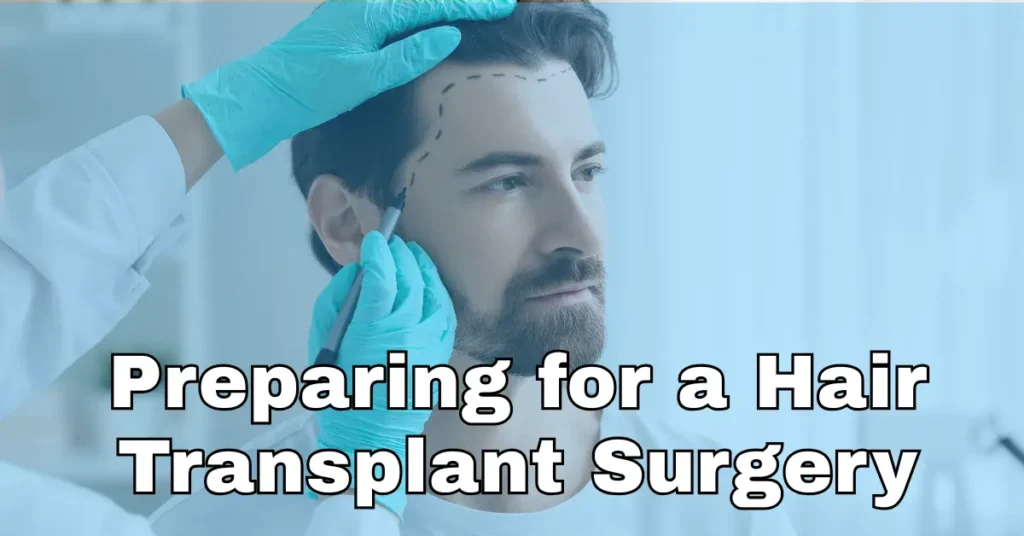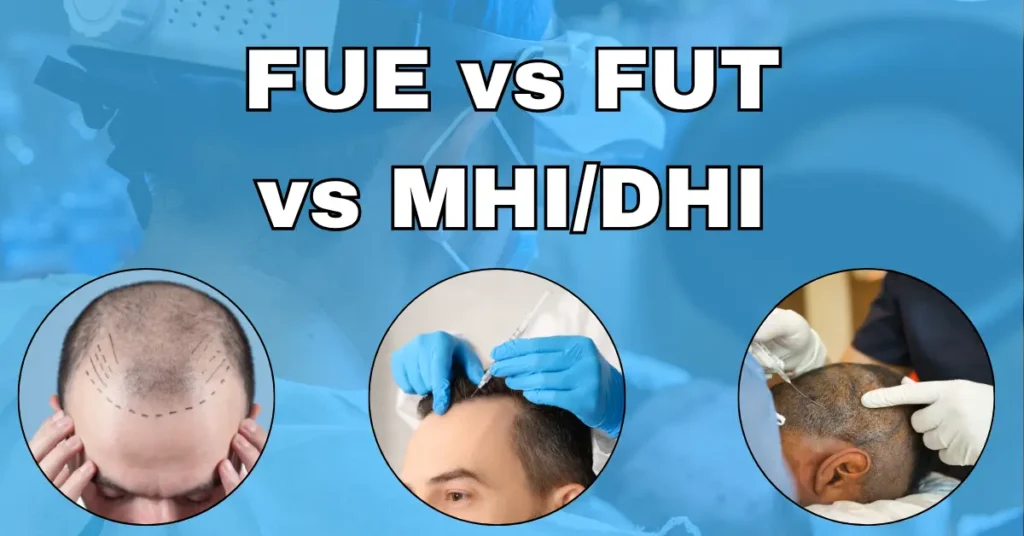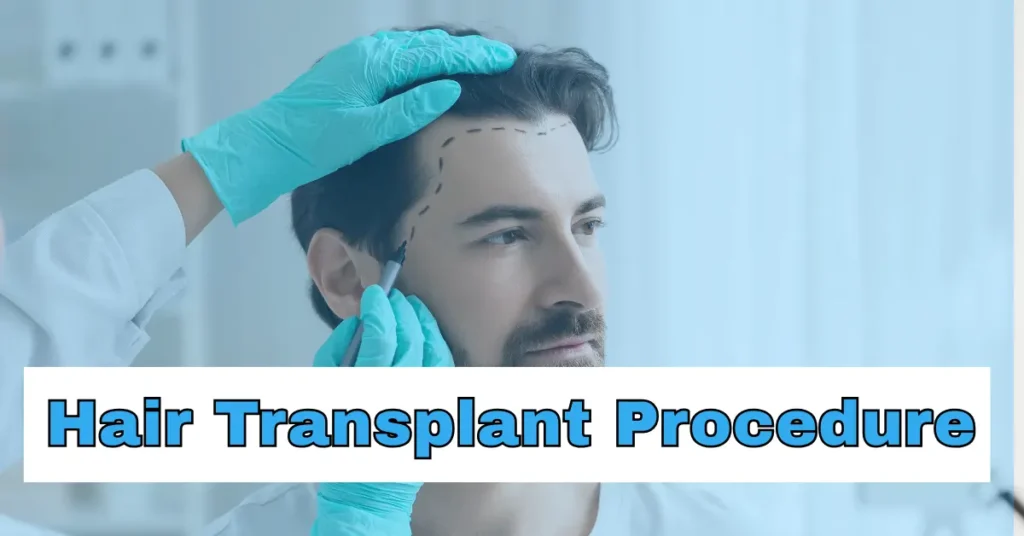Preparing for a Hair Transplant Surgery: A Complete Guide is meant for anyone planning hair restoration and looking for confidence in the process. A hair transplant surgery is a life-changing procedure where healthy hair follicles from a donor area are carefully moved to bald spots or thinning regions (recipient area). This helps men and women regain natural-looking density and new hair growth.
This guide doesn’t just explain the hair transplant procedure—it shows you how to prepare mentally, physically, and practically. The right preparation makes recovery easier, increases the survival rate of transplanted hair, and leads to long-term results. From stopping smoking to adjusting medications and setting realistic hair transplant expectations, every step matters. If you are exploring a solution for hair loss or want clarity on types of hair transplant procedures like FUE or FUT, this guide will simplify your journey. With expert advice and practical preparation steps, you’ll feel informed, relaxed, and ready for transformation.
Hair Transplant Surgery and Its Impact
Hair is more than just appearance—it’s tied to confidence and identity. For many men and women who lose hair, a hair transplant surgery offers not just hair regrowth but also self-esteem.
Still, it’s not a decision to rush. Like all medical procedures, preparation ensures the best outcome. Whether you choose follicular unit extraction (FUE hair transplantations), follicular unit transplantation (FUT), MHI & DHI methods, or other types of hair transplant techniques, being prepared reduces stress and improves your overall hair transplant experience.
This guide covers everything you need before surgery—consultations, lifestyle changes, and day-of-surgery tips.
1. Understanding Hair Transplant Surgery
A hair transplant surgery is a minimally invasive cosmetic treatment where healthy hair follicles are moved from a donor site (usually the back or sides of the scalp) to thinning or bald spots on the scalp (recipient area).
Common Types of Hair Transplant:
- FUE (Follicular Unit Extraction): Hair follicles are removed and implanted one by one. This method leaves almost no visible scarring and has quick recovery.
- FUT (Follicular Unit Transplantation): A strip of scalp is removed from the donor area. Follicles are separated and transplanted. This technique allows more hair grafts per session but leaves a small linear scar.
- DHI (Direct Hair Implantation): A modified FUE method where follicles are directly implanted without pre-incisions.
- MHI & Robotic methods: Advanced, precise techniques that improve density and natural results.
Your hair transplant surgeon will assess your hair loss pattern, donor area quality, and long-term goals before recommending the best option.
2. Why Pre-Surgery Preparation Matters
A successful hair transplant doesn’t rely only on the surgical skill of transplant surgeons—it also depends on how well you prepare.
Good preparation:
- Speeds up healing.
- Lowers risks during hair transplant surgeries.
- Improves the survival of transplanted hair.
- Helps set realistic hair transplant expectations.
Skipping this stage may reduce the quality of your hair restoration results.
3. Pre-Consultation with Your Hair Transplant Surgeon
Before booking surgery, you’ll meet a transplant surgeon. In this consultation, the following will be reviewed:
- Type of hair loss: Commonly androgenetic alopecia (male/female pattern baldness), stress-related hair fall, or medical issues.
- Donor area check: To measure hair density and follicle health.
- Hair grafts needed: To cover bald spots effectively.
- Types of hair transplant techniques: FUE, FUT, or hybrid procedures.
- Medical background: Allergies, medications, or health conditions.
Being honest during this stage helps the surgeon design a realistic solution to hair loss and ensure a smooth hair transplant experience.
4. Preparing Physically Before Surgery
4.1. Stop Blood-Thinning Medications
Around two weeks before your hair transplant procedure, avoid aspirin, anti-inflammatory drugs, and certain supplements. They thin blood and increase bleeding risks.
4.2. Quit Smoking and Alcohol
Smoking blocks healthy blood flow to the scalp and slows recovery. Alcohol also interferes with anesthesia and healing. Stop smoking at least 2–3 weeks before surgery and alcohol one week before.
4.3. Eat a Nutrient-Rich Diet
Proteins, iron, zinc, and vitamins help hair follicles stay healthy. Add eggs, nuts, fish, and leafy greens to your meals before surgery to support recovery and new hair growth.
4.4. Scalp and Hair Care
Wash your hair thoroughly the night before or morning of surgery. Avoid gels, oils, or sprays that may affect the procedure.
5. Mental and Emotional Preparation
It’s normal to feel nervous before a hair transplant procedure. Preparing emotionally makes a big difference.
- Set realistic expectations: Surgery improves coverage and density, but it may not recreate your teenage hairline.
- Patience is key: You’ll see new hair growth starting at 3–4 months, with fuller results by 9–12 months.
- Trust your transplant surgeons: They’ve guided many patients through similar types of hair transplant procedures.
6. Practical Preparations for Surgery Day
Make your surgery day stress-free:
- Wear loose clothing: A button-up or zip-up shirt prevents brushing against the scalp after surgery.
- Plan travel: Arrange someone to drive you home. You may feel tired from anesthesia.
- Eat light: Have a small breakfast unless advised otherwise. Avoid caffeine.
- Stay clean: Wash your hair properly and avoid styling products.
- Rest well: Sleep early the night before for a calm mind.
7. Mistakes to Avoid Before Surgery
Avoid these common mistakes:
- Using hair regrowth products like minoxidil without surgeon approval.
- Heavy exercise right before surgery, which may affect blood flow.
- Stopping prescribed medications for health conditions without medical advice.
- Expecting instant results instead of long-term gradual growth.
8. Questions to Ask Your Hair Transplant Surgeon
Being informed helps reduce anxiety. Ask questions like:
- Which types of hair transplant techniques suit my case?
- How many hair grafts will I need?
- What will my donor area look like after recovery?
- What results can I expect in the long term?
- How do I care for my transplanted hair after surgery?
9. Preparing Your Home for Recovery
Make recovery more comfortable by preparing in advance:
- Pillows: Use extra pillows to sleep upright and reduce swelling.
- Shampoo and aftercare: Follow only what your surgeon recommends.
- Loose hats or caps: Protect your scalp outdoors.
- Entertainment: Books, shows, or music will help while you rest.
10. What to Expect After Surgery
Knowing the recovery process helps set realistic hair transplant expectations.
- Mild swelling, redness, and scabs are normal.
- Avoid scratching the recipient area to protect grafts.
- Follow your surgeon’s post-op care plan carefully.
- Expect new hair growth from 3–4 months, visible density in 6 months, and full hair regrowth within a year.
Conclusion
Preparing for a hair transplant surgery is more than booking a date—it’s about lifestyle changes, setting expectations, and following surgeon’s advice. Every step of preparation supports better results and long-term satisfaction.
Whether you choose FUE hair transplantations, FUT, or advanced MHI & DHI methods, preparation ensures smoother recovery, successful hair restoration, and natural results.
A hair transplant is not just about treating bald spots or a quick fix—it’s about confidence, identity, and peace of mind. Prepare well, trust your transplant surgeons, and look forward to your transformation with healthy, natural new hair growth.

















